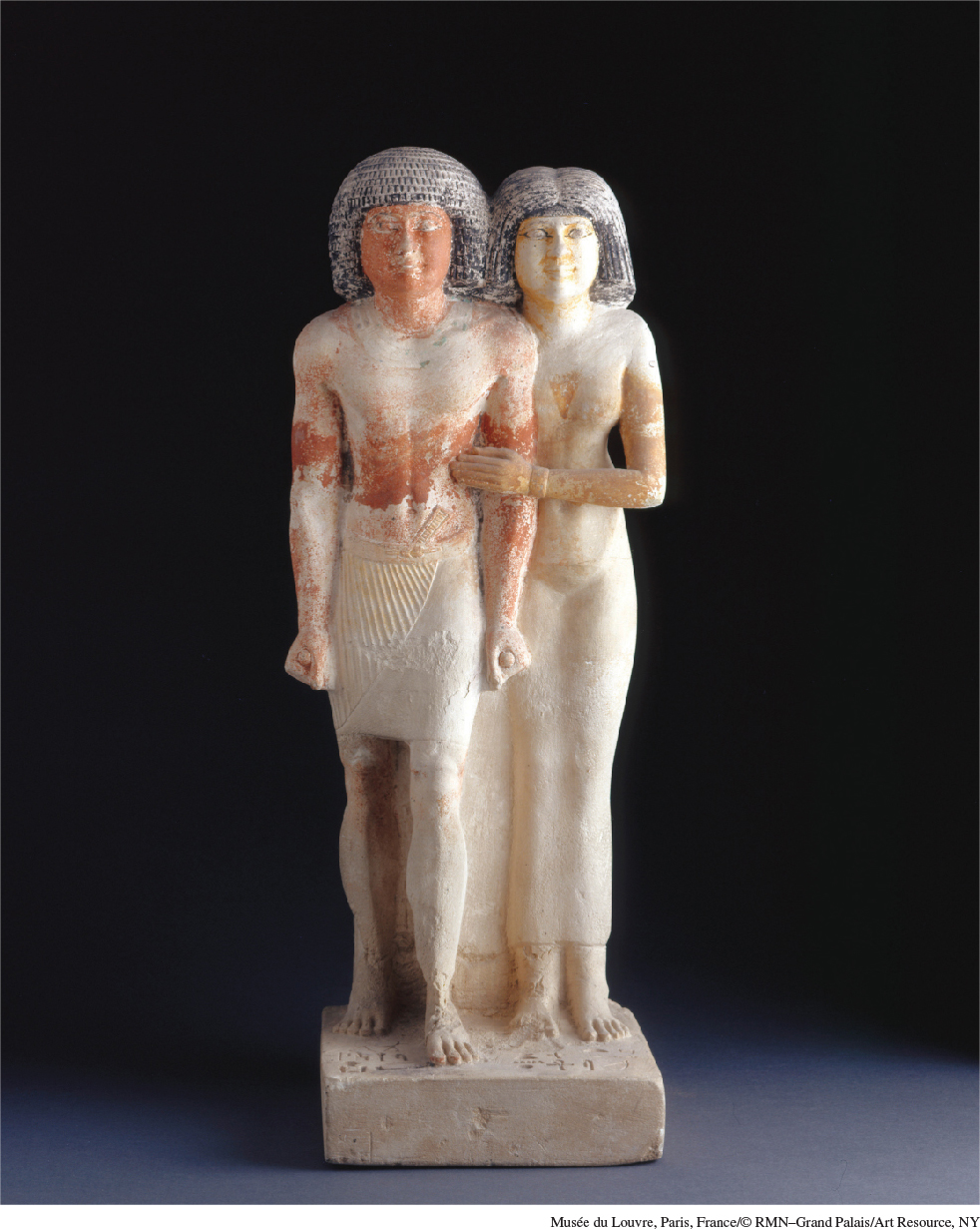Introduction to Chapter 2
CHAPTER 2
First Civilizations
Cities, States, and Unequal Societies 3500 B.C.E.–600 B.C.E.

“Sometimes the weight of civilization can be overwhelming. The fast pace … the burdens of relationships … the political strife … the technological complexity — it’s enough to make you dream of escaping to a simpler life more in touch with nature.”1 Found on the Web site of an organization called Mother Nature Network, this expression of discontent with modernity reflects the perspectives of the back-
This urge to “escape from civilization” has long been a central feature in modern life. It found expression in Henry David Thoreau’s musings on his sojourn at Walden Pond. It is also a major theme in Mark Twain’s famous novel The Adventures of Huckleberry Finn, in which the restless and rebellious Huck resists all efforts to “sivilize” him by fleeing to the freedom of life on the river. In addition, it is a large part of the “cowboy” image in American culture, and it permeates environmentalist efforts to protect the remaining wilderness areas of the country. Nor has this impulse been limited to modern societies and the Western world. The ancient Chinese teachers of Daoism likewise urged their followers to abandon the structured and demanding world of urban and civilized life and to immerse themselves in the eternal patterns of the natural order. It is a strange paradox that we count the creation of civilizations among the major achievements of humankind and yet people within them have often sought to escape the constraints, artificiality, hierarchies, and other discontents of civilized living.
S o what exactly are these civilizations that have generated such ambivalent responses among their inhabitants? When, where, and how did they first arise in human history? What changes did they bring to the people who lived within them? Why might some people criticize or seek to escape from them?
As historians commonly use the term, “civilization” represents a new and particular type of human society, made possible by the immense productivity of the Agricultural Revolution. Such societies encompassed far larger populations than any earlier form of human community and for the first time concentrated some of those people in sizable cities. Both within and beyond these cities, people were organized and controlled by states whose leaders could use force to compel obedience. Profound differences in economic function, skill, wealth, and status sharply divided the people of civilizations, making them far less equal and subject to much greater oppression than had been the case in earlier Paleolithic communities, agricultural villages, pastoral societies, or chiefdoms. Pyramids, temples, palaces, elaborate sculptures, written literature, and complex calendars, as well as more elaborate class and gender hierarchies, slavery, and large-scale warfare — all of these have been among the cultural products of civilization.
| A MAP OF TIME (All dates B.C.E.) | |
|---|---|
| 3500–3000 | Beginnings of Mesopotamian, Egyptian, and Norte Chico civilizations |
| 3400–3200 | Nubian kingdom of Ta-Seti |
| 3200–2350 | Period of independent Sumerian city-states |
| 2663–2195 | Old Kingdom Egypt (high point of pharaoh’s power and pyramid building) |
| 2200–2000 | Beginnings of Chinese, Indus Valley, and Central Asian (Oxus) civilizations |
| 2070–1600 | Xia dynasty in China (traditionally seen as first dynasty of Chinese history) |
| After 2000 | Epic of Gilgamesh compiled |
| 1900–1500 | Babylonian Empire |
| 1792–1750 | Reign of Hammurabi |
| 1700 | Abandonment of Indus Valley cities |
| 1550–1064 | New Kingdom Egypt |
| 1200 | Beginnings of Olmec civilization |
| 760–660 | Kush conquest of Egypt |
| 586 | Babylonian conquest of Judah |
| By 500 | Egypt and Mesopotamia incorporated into Persian Empire |
SEEKING THE MAIN POINT
What distinguished “civilizations” from earlier Paleolithic and Neolithic societies?